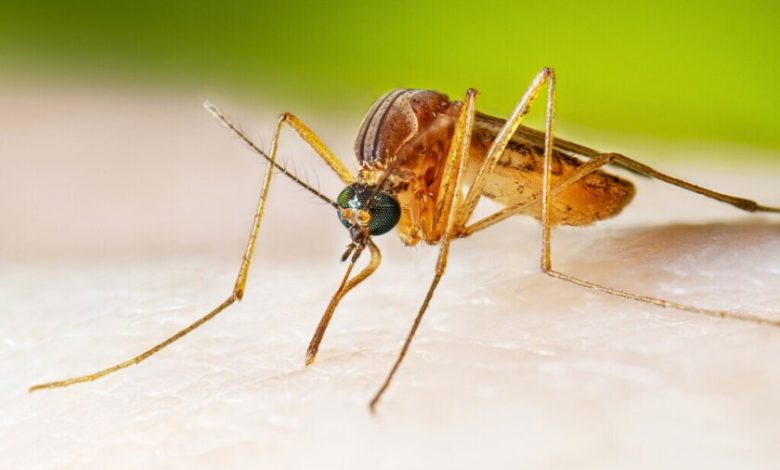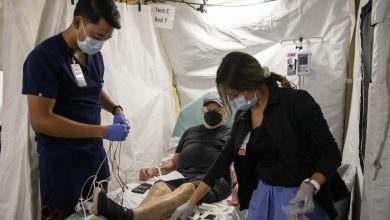First West Nile Death in Illinois 2025: Symptoms, Risks, and Protection Tips

A suburban Cook County resident in their 60s has died after contracting West Nile virus (WNV), marking the first West Nile–related death in Illinois for 2025. State and county public health officials confirmed laboratory testing showed the virus was a contributing factor. The news has renewed warnings from health authorities to take mosquito-bite prevention seriously as late summer and early fall continue to be active months for mosquito-borne disease.
Below is a clear, practical guide that explains what West Nile virus is, the symptoms to watch for, who’s at greatest risk, what public health officials are doing, and—most importantly—how you and your household can reduce your risk right now.
What is West Nile virus?
West Nile virus is a mosquito-borne virus that cycles between birds and mosquitoes, and sometimes spills over to humans and other mammals. Most people who become infected with WNV never get sick or have only mild flu-like symptoms. But in a minority of cases the virus can invade the nervous system (neuroinvasive disease), causing meningitis, encephalitis, or acute flaccid paralysis; these severe cases can be life-threatening, especially among older adults and people with weakened immune systems. The Centers for Disease Control and Prevention (CDC) tracks West Nile activity across the U.S. and provides ongoing surveillance each year.
Where things stand in Illinois (the short version)
- The Cook County Department of Public Health confirmed the death and said the person was in their 60s; county surveillance shows a higher-than-usual number of cases this season in suburban Cook County.
- Illinois data pages show increased activity statewide in 2025: the state dashboard reported dozens of human cases and one confirmed human death as of mid-September 2025, with hundreds or thousands of positive mosquito batches identified through routine surveillance. (State dashboards are updated frequently; check local health department pages for the latest numbers.)
These local trends matter because West Nile virus risk is tied not only to statewide totals but to local mosquito infection rates and the presence of human cases in your county.
How people get infected
People get West Nile virus when bitten by an infected mosquito—most commonly Culex species that feed on infected birds and then bite people. Transmission does not occur person-to-person through casual contact (exception: extremely rare transmission through blood transfusion or organ transplant, which blood banks screen for). The typical route is mosquito → human.
Symptoms: what to watch for
The incubation period (time from bite to symptoms) is typically 2–14 days.
Most infections are mild or asymptomatic. If symptoms occur, they usually appear as a mild “West Nile fever”:
- Fever
- Headache
- Body aches and fatigue
- Nausea, sometimes vomiting
- Skin rash on the trunk of the body (in some people)
- Swollen lymph nodes
About 1 in 150 infections progresses to neuroinvasive disease (when the virus affects the brain or spinal cord). Neuroinvasive signs are serious and require urgent medical attention:
- High fever
- Stiff neck
- Severe headache
- Confusion, disorientation, or sudden changes in alertness
- Seizures
- Muscle weakness or paralysis (sometimes one-sided)
- Sensory changes or difficulty speaking
If someone—especially an older adult or an immunocompromised person—develops high fever, severe headache, confusion, trouble walking, or weakness, they should seek medical care immediately. Early supportive care in hospital (sometimes including ICU care) is how severe cases are managed since there is no specific antiviral treatment approved for WNV in humans.
Who is at higher risk?
While anyone can be infected, certain groups face a higher risk of severe illness:
- Older adults, especially people over age 50–60 (risk increases with age). The Cook County fatality involved a person in their 60s, which aligns with the well-known age risk profile.
- People with weakened immune systems—for example, those on immunosuppressive medications, people with cancer, or organ transplant recipients.
- People with certain chronic conditions, such as diabetes or chronic kidney disease, may face higher risk of complications.
- People who spend long periods outdoors at dusk and dawn or live in areas with high mosquito populations or poor mosquito control.
What public health officials are doing
Local and state public health departments perform several actions when WNV activity rises:
- Enhanced surveillance of mosquito traps, dead birds, horses, and human cases to map risk locations. Illinois reported many positive mosquito batches this season, signaling active virus circulation in mosquito populations.
- Public messaging to inform residents about prevention (repellents, protective clothing, eliminating standing water).
- Targeted mosquito control (larviciding or adulticiding) in neighborhoods where virus-positive mosquitoes are found or when human cases cluster.
- Coordination with health care providers to ensure clinicians consider WNV in people with compatible symptoms and test when appropriate.
Practical protection tips — what you can do today
Prevention is entirely focused on avoiding mosquito bites and reducing local mosquito breeding sites. Use the simple “Three R’s” public health message: Reduce, Repel, Report.
Reduce: eliminate mosquito breeding sites
- Empty, clean, or cover containers that hold standing water at least once a week: flowerpot saucers, buckets, birdbaths, tarps, gutters, old tires, and kiddie pools. Mosquitoes can breed in tiny amounts of water.
- Keep swimming pools maintained and chlorinated; even small puddles in pool covers are a problem.
- Fix leaky outdoor faucets and remove debris that holds water.
Repel: protect yourself from bites
- Use an EPA-registered insect repellent that contains DEET, picaridin, IR3535, oil of lemon eucalyptus (OLE/PMD), or 2-undecanone. Follow label instructions for application and reapplication.
- Wear long sleeves and long pants in the early morning and evening (when Culex mosquitoes are often active). Light-colored, loose-fitting clothing is best.
- Consider permethrin-treated clothing or gear (applied to clothing/gear, not skin) for extra protection—permethrin is effective against mosquitoes and remains active through several washes.
- Install or repair window and door screens to keep mosquitoes out of the house.
Report and be aware locally
- If you see dead birds (depending on local guidance) or large numbers of mosquitoes, report them to your local health department—this can trigger targeted mosquito testing and control.
- Stay informed by checking your county health department or state IDPH dashboard for local mosquito and human case activity. Illinois and county pages are updated during surveillance season.
If you or a family member gets sick
- For mild symptoms (fever, aches, fatigue): rest, stay hydrated, and treat pain/fever with acetaminophen or ibuprofen per label instructions. See a health care provider if symptoms worsen.
- For severe symptoms or neurological signs (confusion, severe headache, trouble walking, seizure): seek emergency medical care immediately. Tell the clinician if you were recently exposed to mosquitoes or if West Nile virus is active in your area.
- Diagnostic testing is available through clinicians and public health labs; testing can confirm WNV infection using blood tests (serology) or, in severe cases, testing of cerebrospinal fluid.
Myths and clarifications
- Myth: “You can catch West Nile virus from another person.”
Fact: Person-to-person spread is extremely rare; routine contact does not transmit WNV. The primary route is mosquito bites. Blood transfusions and organ transplants are screened and monitored. - Myth: “Mosquito season is over once summer ends.”
Fact: Mosquito activity persists into fall in many areas while temperatures stay warm. Late summer and early fall often see peak WNV transmission. That’s why health departments continue surveillance through September and beyond.
Why these seasonal spikes happen
Several environmental factors influence WNV transmission:
- Temperature: Warmer temperatures speed mosquito development and the virus’s ability to replicate in mosquitoes.
- Rainfall and standing water: More breeding sites mean more mosquitoes. However, drought conditions can concentrate birds and mosquitoes around limited water sources, sometimes increasing transmission.
- Bird infection levels: Since the virus amplifies in bird populations, higher bird infection rates can drive more infected mosquitoes. Public health mosquito surveillance (traps and testing) helps detect rising risk before human cases appear.
What this means going forward
A single human death is tragic and a reminder that WNV can be deadly, particularly for older adults. But it’s also an opportunity for community-level prevention: when local residents eliminate mosquito habitats, use repellents, and follow public health advice, local mosquito populations and human cases decline. Illinois health officials have emphasized prevention and surveillance following the confirmed death and ongoing cluster of cases in suburban Cook County.
If you live in Illinois (or a neighboring state), keep an eye on your local health department’s WNV dashboard and follow practical prevention steps—most of which cost little and protect not only you but your neighbors.
Quick checklist you can follow today
- Empty standing water from containers around your property (weekly).
- Apply EPA-registered repellent when outdoors at dawn/dusk.
- Wear long sleeves/pants during mosquito-active hours.
- Repair screens and consider permethrin on outdoor clothing.
- If you find unusual numbers of dead birds or sick horses, notify local public health or animal health officials.
- If you or an older person in your household develops concerning neurological symptoms, seek immediate care.
Final takeaway
While most West Nile virus infections are mild or symptom-free, the virus can cause severe and sometimes fatal neurological illness—especially in older adults. Illinois’s first confirmed WNV death of 2025 is a reminder that mosquito-borne disease risk is real and largely preventable with practical measures: reduce breeding sites, repel bites, and stay aware of local public health updates. These steps protect you, your family, and your community.




